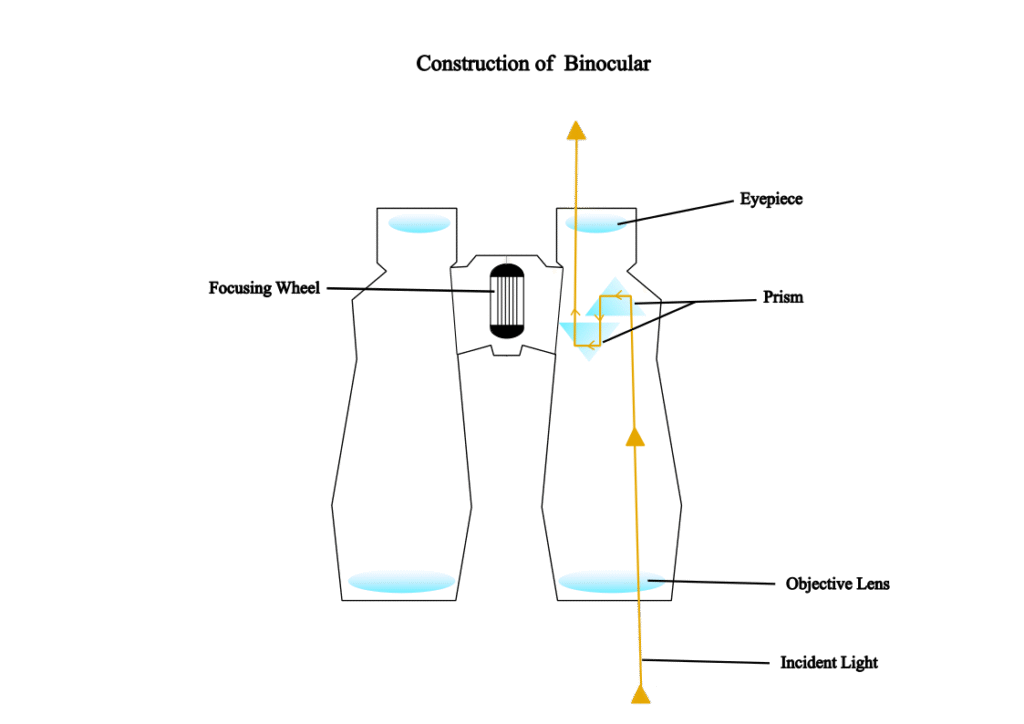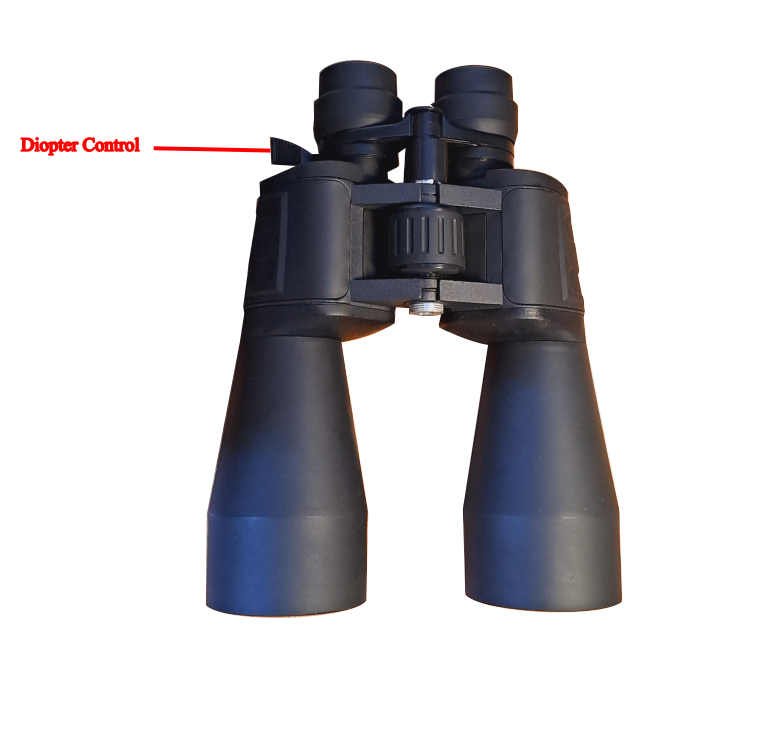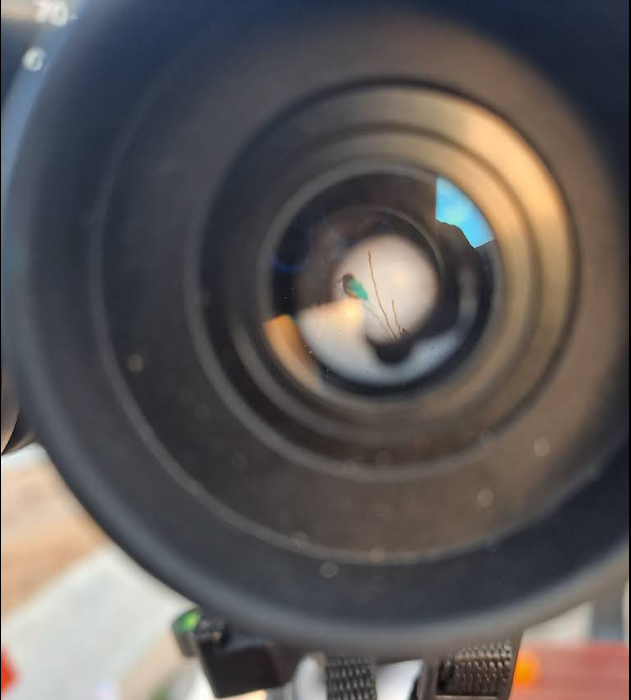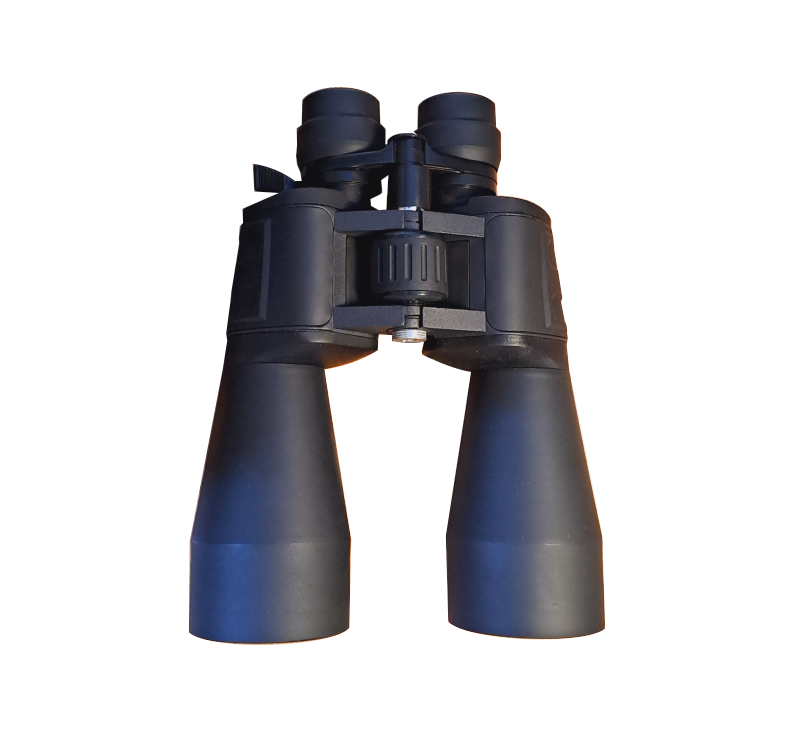Binoculars are interesting devices that helps us in viewing distant objects with some level of magnification.
It can be used for many things such as sporting events, star gazing, bird watching along with many different natural views.
How it works?
The below diagram shows the construction of a typical binocular:

In order to understand the working of binocular, let’s try to understand what is purpose of each of the component in binocular.
Objective Lens
The large pair of lens at the front of binocular are known as objective lens. The light reflected off from the distant objects enters through these lenses and converge onto an inside prism where it forms an inverted image.
Prism
The image formed on the prism is inverted, therefore the purpose of two prisms is to correct the orientation of the image so that observer view the upright image.
Furthermore, since prisms reflect light multiple times, hence it helps in improving image clarity and increase its sharpness.
Eyepiece
Once the light leaves the two prism, it enters into eyepiece lenses where it is then observed by observer. The eyepiece lenses are convex lenses which magnifies the image thereby enabling the observer to see the distant object in greater details.
Focusing wheel
When viewing objects at varying distances, the focusing wheel allows us to quickly adjust and maintain a sharp image.
Almost every binocular has a focusing wheel. By rotating the focusing wheel, the convex lenses are adjusted so that image appears sharp and clear to the observer.
Diopter Adjustment
Some binoculars have an additional feature of diopter adjustment. It is a small adjustment wheel on one of the eyepieces that allows you to compensate for any differences in vision between your left and right eyes.

Key features of Binoculars
Whenever you see binoculars, you will see that some numbers usually in the form of 30 x 60. This represents the specifications of the binocular.
Magnifying Power
The first number represents the magnifying power of the binocular. For example, if the binocular has a rating of 30 x 60, then 30 represents the magnifying power which means that this such a binocular will magnify the viewed object 30 times. Higher the magnifying power, the bigger the objects will appear.
Light Gathering Power
The second number represents the diameter in millimeters of objective lens. Since larger the diameter, the more light it will take in and hence the more brighter the object will appear. Hence this number in the binocular gives us an indication of the light gathering power.
If you have three binoculars with the ratings of 40×80, 50×80 and 60×80, then the one with the highest magnifying power has a value of 60 but the object you will see through the 60×80 binocular will be dimmer as compare to the other two binoculars. This is due to the reason that the same amount of light is collected in all three binoculars because all binoculars have the same diameters of objective lenses which means all three binoculars have same light gathering power.
Higher the magnifying power the dimmer the object will appear.
Field of View
Another important feature of the binocular is Field of View. This is the maximum area that you can see from a particular binocular.
You might have guessed that if a binocular has a high magnifying power, then smaller will be it’s field of view. The field of view is given in degrees.
Another important feature of the binocular is Field of View. This is the maximum area that you can see from a particular binocular.
You might have guessed that if a binocular has a high magnifying power, then smaller will be it’s field of view. The field of view is given in degrees.
What you can see from Binocular?
Below are some of the practical applications of binoculars. Depending upon the typical application, binocular with varying specifications can be required.
Astronomy
Binoculars are widely used by amateur astronomers to observe the celestial objects during night sky. Several objects such as moon, planets, star clusters can be observed with binoculars. They provide a wider field of view compared to telescopes, making it easier to scan the night sky.
For example, a 10×50 binocular lets you see Jupiter’s moons and details on the Moon’s craters.
Bird Watching & Wildlife Observation
Binoculars are used to observe animals and birds from a distance without disturbing them.

Sports & Entertainment
Spectators at football matches, horse racing, or concerts use binoculars to get a closer view of the action. Compact binoculars are especially popular in theaters and opera houses.
Hiking & Adventure Tourism
Hikers and travelers use binoculars to enjoy scenic landscapes, mountain ranges, and distant landmarks.
If you are interested to buy your own binocular, you can click here:

